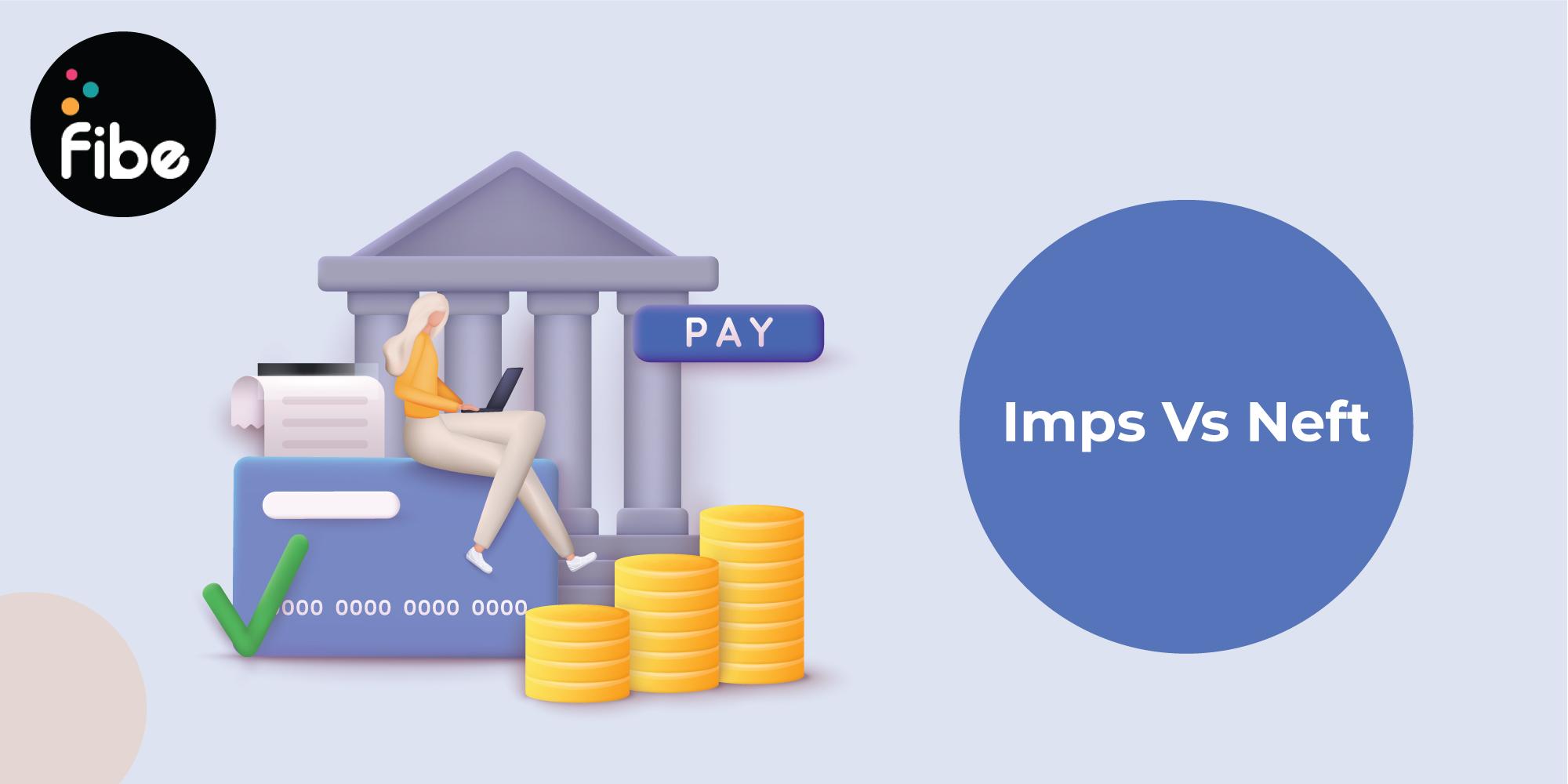IMPS vs NEFT – Understand the Difference & Charges
Reviewed by: Fibe Research Team
- Updated on: 17 Apr 2025
Reviewed by: Fibe Research Team

Choosing between IMPS vs NEFT electronic fund transfer options depends on multiple factors. These two options serve the same goal of making convenient fund transfers but have many distinct features and benefits.
Old-school fund transfer methods allow you to send and receive a higher amount through multiple channels. Therefore, many private and government agencies rely on these options for fund transfer.
Read on to learn more about NEFT vs IMPS differences and choose a convenient option.
IMPS stands for Immediate Payments Service, which is an electronic payment facility established by the National Payments Corporation of India (NPCI). NEFT, on the other
hand is an acronym for National Electronic Fund Transfer, launched by the RBI.
Both these fund transfer options allow you to make interbank transactions nationwide. All you have to do is provide basic details of the beneficiary available, and you can choose from either option at your convenience.
Here are a few essential pointers you must know to understand the features of IMPS vs NEFT.
In addition, here is a tabulated overview of IMPS vs NEFT:
| Particular | IMPS | NEFT |
|---|---|---|
| Mode of transfer | Online | Offline and online |
| Settlement Type | Real-time | Half-hour |
| Time taken | Instant | Batches of half-hour |
| Limit | Minimum: ₹1 Maximum: ₹5 lakhs | Minimum: ₹1 Maximum: As per the bank’s discretion |
| Charges | Up to ₹10,000: ₹2.5 + GST₹10,001 – ₹1 lac: ₹5 + GST₹1 lac – ₹2 lakhs: ₹15 + GST | Up to ₹10,000: ₹2.5 + GST₹10,001 – ₹1 lac: ₹5 + GST₹1 lac – ₹2 lakhs: ₹15 + GST Above ₹2 lakhs: ₹25 + GST |
To initiate a fund transfer with IMPS, follow these steps.
If you choose IMPS, here are the steps you must follow.
Also Read: Difference Between NEFT and RTGS
Once you add the new beneficiary, you must wait for a period of 30 minutes before proceeding ahead. However, there is no such waiting time for IMPS. So, consider this criterion when choosing IMPS vs NEFT.
While both options have equal security and reliability, you must consider all the factors, such as time taken, amount and charges, when comparing IMPS vs NEFT. You can choose either option to make a transaction for up to ₹5 lakhs. But for a higher amount, you can opt for NEFT.
Since the charges for both are the same, you will pay an equal fee for both facilities. However, you must consider the processing time, as you may have the advantage of instant transfer via IMPS. Nevertheless, if it’s not an urgent payment, you can also choose NEFT.
In conclusion, you can choose from either option to make a fund transfer depending on the urgency and your fund transfer limit. However, if you require urgent funds for any financial emergency or otherwise, you can apply at Fibe.
With Fibe Personal Loan Online, you can get up to ₹5 lakhs quickly. A 100% digital application process, affordable interest rates and convenient tenure options are a few added perks you stand to enjoy when you opt for Fibe. Download the Personal Loan App or visit our website to apply now!
Yes, banks have variable charges for IMPS fund transfers depending on your amount. However, these charges only apply for outward IMPS transactions, and inward IMPS transfers have no fees.
No, you must pay some fees to facilitate NEFT transactions, which depends on your transfer amount.
You can send a minimum ₹1 up to ₹5 lakhs through IMPS. However, the upper limit for fund transfers is subject to bank policy.
Effective February 1, 2022, the daily maximum fund transfer limit for IMPS is up to ₹5 lakhs.